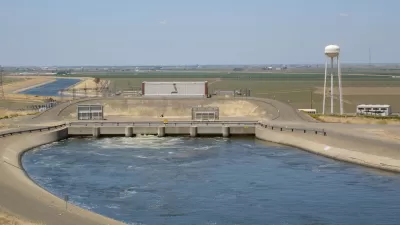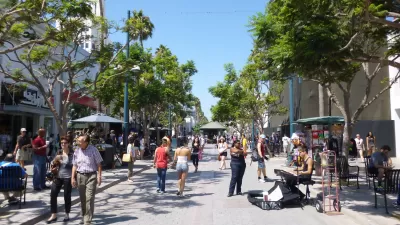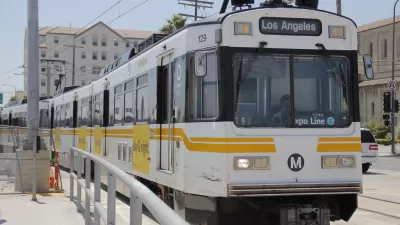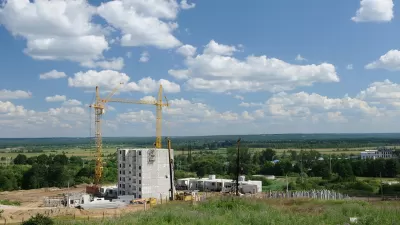The cities of Santa Monica, Culver CIty, West Hollywood, and Malibu are championing stormwater infrastructure, new public transit, affordable housing, and action on homelessness prevention.

The small cities that make up Los Angeles County’s Westside are well positioned to implement innovative solutions to chronic regional problem, like housing affordability and homelessness, transit access, and congestion—especially if they work together. Recently, the mayors of Santa Monica, Culver CIty, West Hollywood, and Malibu convened at a Westside Urban Forum event to discuss the priorities ahead for a changing demographics and changing economy, and the potential impacts of the Trump Administration.
In The Planning Report, the mayors respond to the recent Loyola Marymount University (Los Angeles) Forecast LA surveys that project widespread optimism about the future of the region. While being quite worried about the future and stability of the country and globe, Angelenos very positive about the direction of the region and their local government.
Most notably, as the County of Los Angeles debates a potential stormwater funding measure, Culver City recently passed a parcel tax that will result in about $2 million a year in funding. As Culver City Mayor Jim Clarke stated, the city "hopes to be able to leverage with grants and public-private projects to mitigate runoff issues and meet our MS4 permit requirements. While Culver City comprises only 4 percent of the Ballona Watershed, the mitigation measures we will have to undertake to eliminate trash, bacteria, toxics and heavy metals could cost as much as $120 million—more than our annual General Fund budget."
The mayors of coastal cities, Santa Monica and Malibu, both addressed the increasing threat of sea-level rise. As one commenter put it, the cities "need to be planning for 2050, not 1950," in terms of investing in climate-resilient infrastructure.
Additionally, as the city of Los Angeles deals with housing affordability and increasing housing supply, cities like West Hollywood have taken on the challenge of protecting the existing rental housing supply and assisting middle-income residents stay in their units. Look for Los Angeles leaders to continue to use their neighboring cities as a bellwether for potential next pilot projects, policy decisions and long-range priorities.
FULL STORY: Westside Urban Forum: Metro LA’s Westside Mayors Address City Prospects & Challenges

Planetizen Federal Action Tracker
A weekly monitor of how Trump’s orders and actions are impacting planners and planning in America.

Congressman Proposes Bill to Rename DC Metro “Trump Train”
The Make Autorail Great Again Act would withhold federal funding to the system until the Washington Metropolitan Area Transit Authority (WMATA), rebrands as the Washington Metropolitan Authority for Greater Access (WMAGA).

DARTSpace Platform Streamlines Dallas TOD Application Process
The Dallas transit agency hopes a shorter permitting timeline will boost transit-oriented development around rail stations.

The Tiny, Adorable $7,000 Car Turning Japan Onto EVs
The single seat Mibot charges from a regular plug in about as much time as an iPad, and is about half the price of an average EV.

Supreme Court Ruling in Pipeline Case Guts Federal Environmental Law
The decision limits the scope of a federal law that mandates extensive environmental impact reviews of energy, infrastructure, and transportation projects.

Texas State Bills to Defund Dallas Transit Die
DART would have seen a 30% service cut, $230M annual losses had the bills survived.
Urban Design for Planners 1: Software Tools
This six-course series explores essential urban design concepts using open source software and equips planners with the tools they need to participate fully in the urban design process.
Planning for Universal Design
Learn the tools for implementing Universal Design in planning regulations.
Roanoke Valley-Alleghany Regional Commission
City of Mt Shasta
City of Camden Redevelopment Agency
City of Astoria
Transportation Research & Education Center (TREC) at Portland State University
US High Speed Rail Association
City of Camden Redevelopment Agency
Municipality of Princeton (NJ)





























